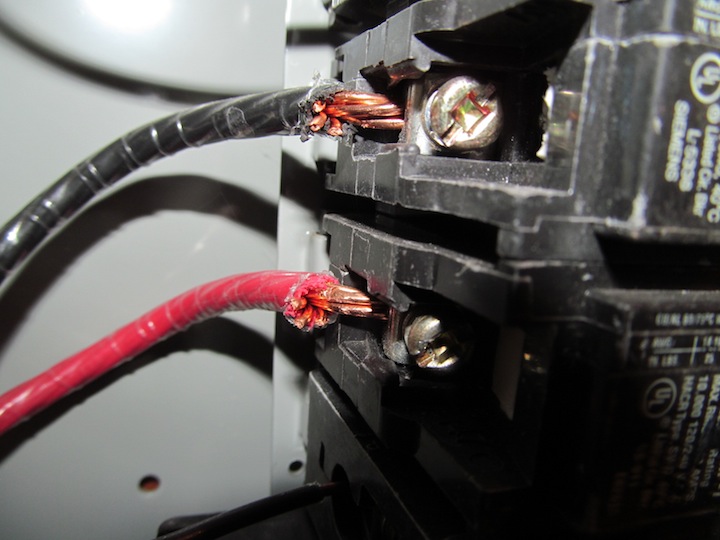These conductors were shaved, but were connected to 20-amp breakers. Would you say that this is acceptable, considering that the ampacity of the conductors exceeds the breakers they are connected to, or would you write it up as a defect because they are not being used in the rated manner? 
How would you determine the ampacity of the remaining strands?
In no way would I call this acceptable…
That is a very good question Jim. There only three strands cut, but I don’t suppose the ampacity of the conductors can be determined numerically by counting the remaining strands. LOL
Why would you need to, wouldn’t all the strands become energized anyway?
BTW I do report on over sized conductors. In this case what are these conductors connected to and is that component rated for 20AMPS? Either way properly sized conductors and over-current device should be installed.
The current would only be able to be carried initally on the remaining strands until contact was made with the cutoff strands. We do not know the ampacity of the remaining strands. This was an improper termination practice.
Why would you report on conductors that are larger than required?
Over size conductors no big deal Undersize could be trouble .
Wire to big for the screw just pig tail it down to an appropriate size .
Long runs frequently use a larger cable ( example #12 )
( instead of #14 ) to try and help stop voltage drop.
Depending on what the over-current device is used for. For example a component requiring a 40 AMP breaker with over sized conductors reduced to fit double pole 20AMP over-current device resulting in tripping.
I agree an undersized conductor can be a bigger issue with overheating possible.
I agree, two wirenuts and a smaller conductor would be code compliant. What’s depicted in the photo is not.
In that example the conductors are not oversized, the breaker is undersized.
